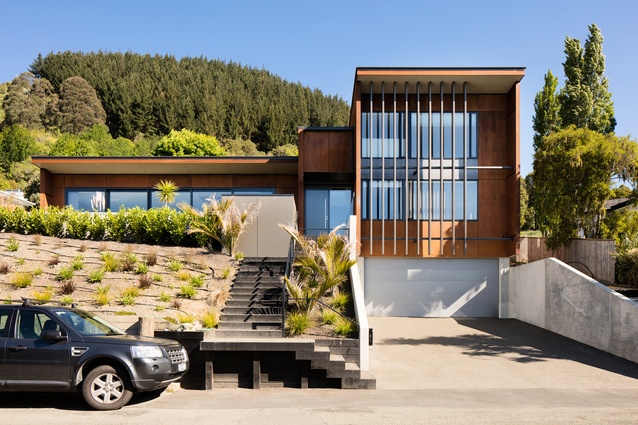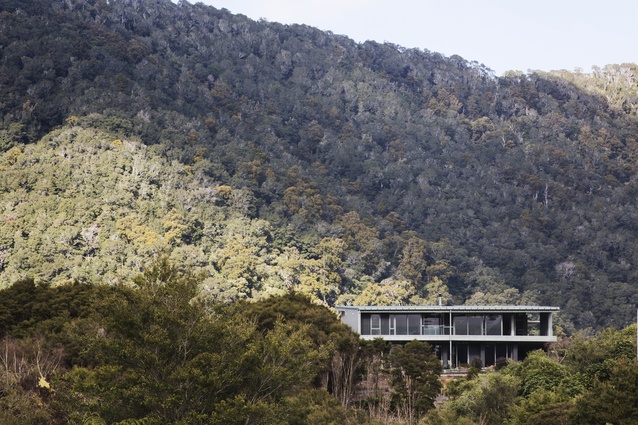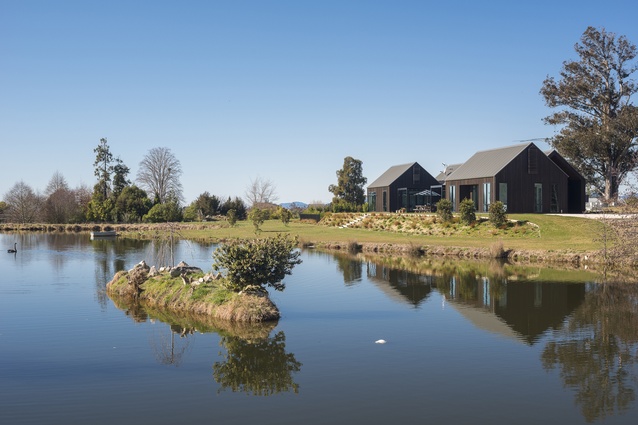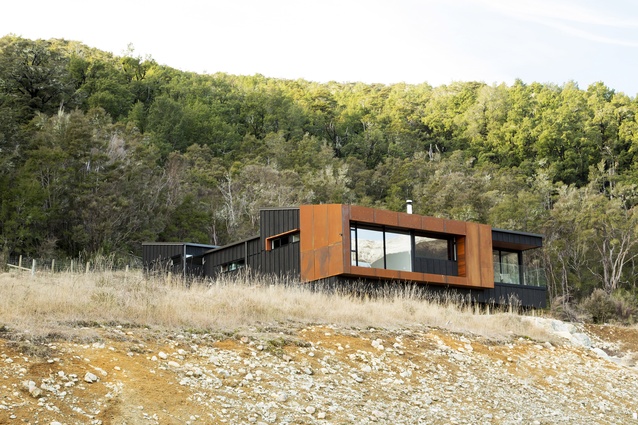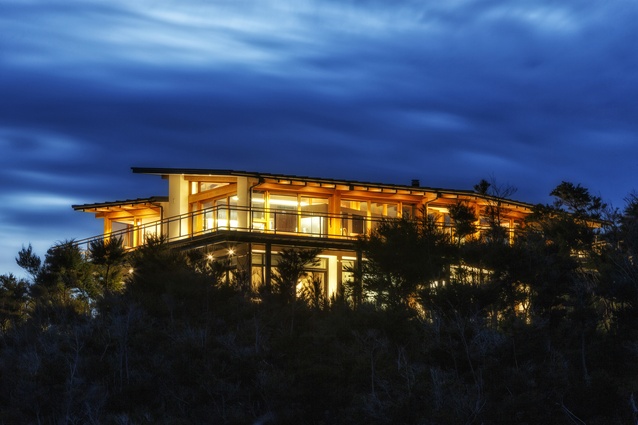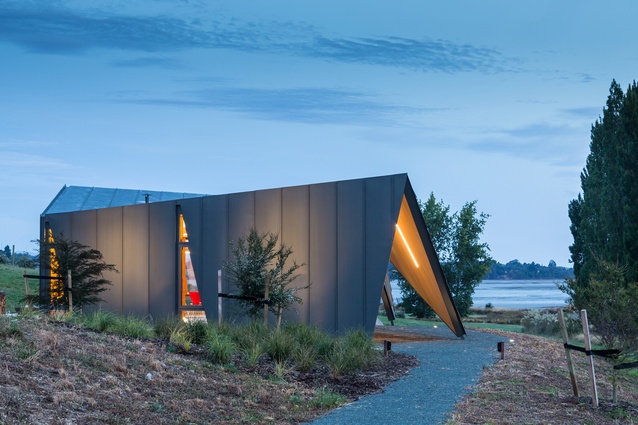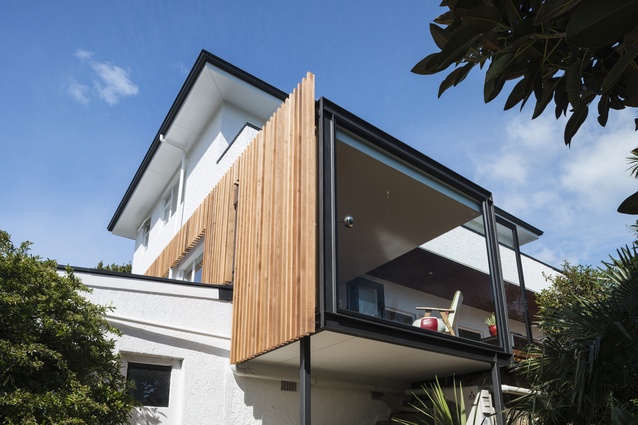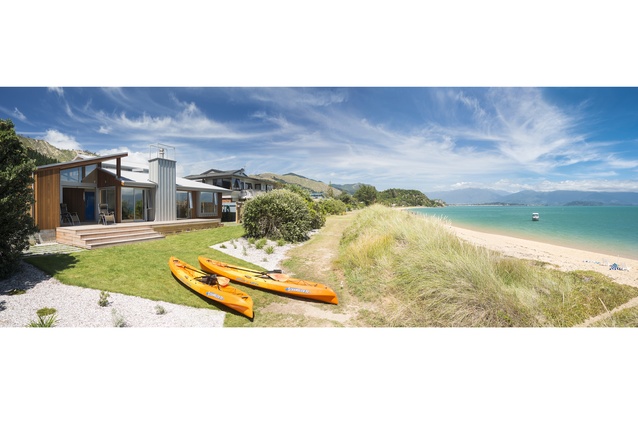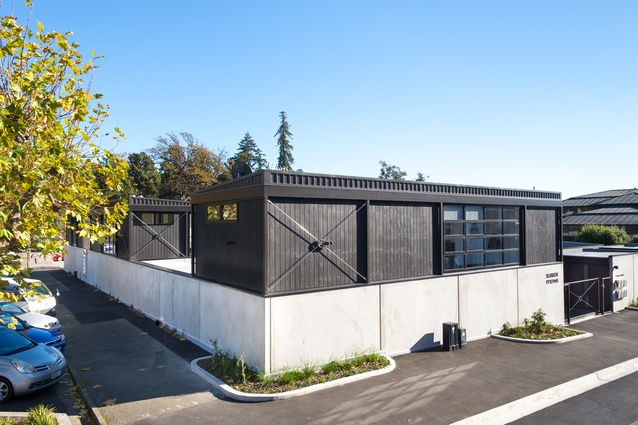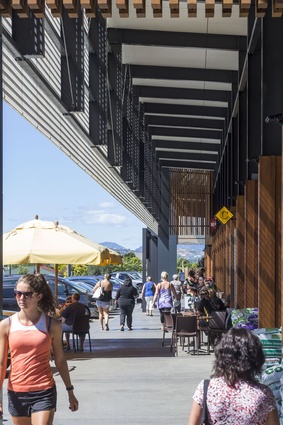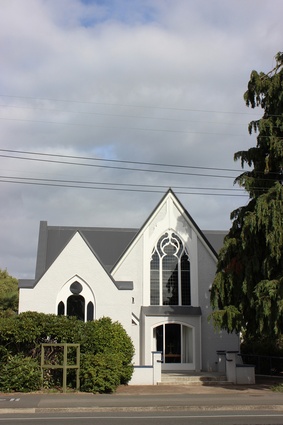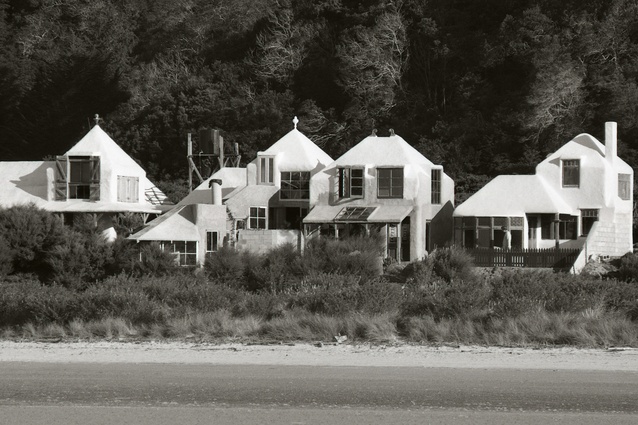2016 Nelson–Marlborough Architecture Awards
Following a long-standing tradition of high quality homes in the region, residential housing has emerged once more as the main building type rewarded at the Nelson–Marlborough Architecture Awards.
The awards were announced at an event at Nelson’s Saxton Oval on the evening of Thursday 5 May. Of the twelve projects honoured on the night, six new houses and two home alteration and additions projects received awards.
Rachel Dodd, convenor of the awards jury, noted the high quality of the shortlisted housing projects but also commented, “Firstly, the term ‘bach’ seems to have lost its original meaning of a small, very modest holiday home or beach house. Also, New Zealand architecture generally remains obsessed with views – sometimes to the detriment of other aspects, such as the relationship to your neighbours.”
“The best projects we saw not only acknowledged stunning views, but also considered contextual issues – the sun and its path across the sky, the wind, the approach to the home, as well as the rituals, requirements and relationships of inhabitation and the atmosphere of the environment created,” she summarized.
Awards were also conferred in the categories of heritage, commercial and enduring architecture. Nelson’s Irving Smith Architects’ innovative and high quality work gained the firm three awards in three different categories.
Full list of winners with jury citations below.
HOUSING AWARDS:
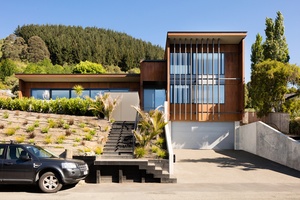
Harden Reese House by Jerram Tocker Barron Architects
A steep and difficult site has provided a springboard for the creation of a home that opens up to capture north-facing views while maintaining a level of privacy from neighbouring properties. Within the well-detailed interior, a beautifully finished stair accentuates the home’s verticality over three levels, and cleverly placed timber joinery provides partial separation between the kitchen and living spaces. This is a simple and elegant home.
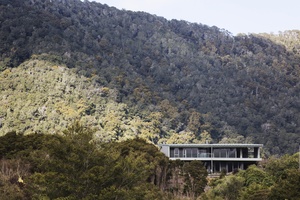
Duncan Bay House by Irving Smith Architects
A beautiful site in a challenging environment has been provided with a well-designed and well-planned house. A number of external spaces offer shelter in the landscape, each providing an option for being comfortably outside in any of the prevailing winds. The house has been well modulated and positioned so that it claims stunning views down the bay without dominating the landscape. Strong materials acknowledge the demands of the testing environment, and their colours also work to blend the house into its surroundings.
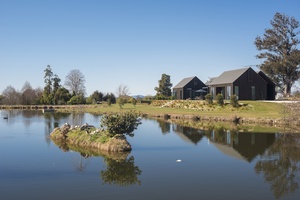
Holliday House by Redbox Architects
Grouped shed-like forms create a welcoming home that is planned to easily accommodate extended family members and guests. The light-filled house is a lovely response to the clients’ brief. The exposed, pitched-cedar-batten ceiling and macrocarpa trusses, along with cedar display shelving, bring warmth into the home. These elements have been subtly highlighted with well-placed lighting to ensure the feeling of warmth continues into the evening. The house sits quietly but confidently in its rural setting, and is clearly a delight to its owners.
Resene Colour Award:
A bright red door – no apologies made here in signaling the point of entry – is matched with a similarly hued letterbox. These exclamations of colour acknowledge the red netting used to protect the crops of apples and hops for which the region is known and proudly proclaim the building as a landmark in the landscape.
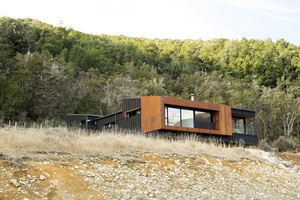
Pearson Bach by Redbox Architects
Given a questionable location, the architects have maximised the opportunities handed to them. Addressing the challenges of a south-facing, sub-alpine lot, this building arranges itself around a central courtyard that makes the most of magnificent views over the lake. The orientation means that interior spaces capture any available sun, and the layering of textures and materials, such as cork and cedar, along with the rich, folded ceiling planes create a warm and welcoming refuge. The use of corten steel for a window-box frame gives the building a strong presence in this harsh landscape.
Resene Colour Award:
By highlighting the timber window eyebrows in a similar tone to corten steel, an additional layer of exterior depth and richness has been created. A simple move well executed.
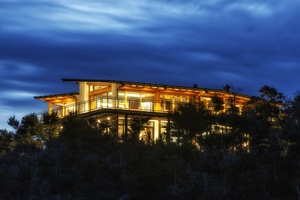
Split Apple Rock House by Matz Architects
A phenomenal panorama is a driver for this home’s plan. Framed with sophistication and complexity, the views and exterior connections vary as you move throughout the house. Beautiful detailing harks back to Arts and Crafts precedents and provides a richness to the living spaces that matches the views. The architects have married their international clients’ desires to a local sensibility, an understanding of the site and the wider context. The result is a strong piece of architecture well suited to their needs.
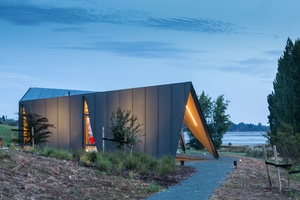
Torea Studio by Tennent+Brown Architects
This small rural studio for work and meetings is an expressive response to a narrative. The metaphor of two Torea (oystercatchers) walking down the site has been captured with a single move – using Computer Numerically Controlled cut, cross-laminated timber panels wrapped in a tight skin of zinc. Restrained and deceptively simple, this approach creates a folded space that flows seamlessly from outside to in. Austere bedrooms are made delightful by a material richness and considered openings for light and views, and small moves, such as a perforated steel ‘seat’ over a radiator, elevate the overall effect of the building. This building was a joy to visit; it is a stimulating and creative work environment for its owner.
HOUSING ALTS & ADDS AWARD:
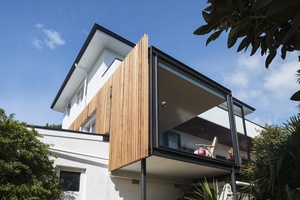
Chisnall Alterations by Jerram Tocker Barron Architects
A simple, cedar ‘wrap’ over the existing exterior, which connects the original house with a new living area, is one of a series of strong moves that create a welcoming and functional family home. The architects have shown a great understanding of the Building Code, astutely providing (or avoiding) specific elements. An outdoor deck, linking a new bedroom and living area, has been cleverly worked to achieve the functionality of an outdoor room. This is a good example of how small but well thought through interventions can produce a meaningful result.
Resene Colour Award:
A simple dichromatic palette of white and red has been successfully employed to frame or contrast the garden, sky and the mixed colours of the hedging that lines the deck edge.
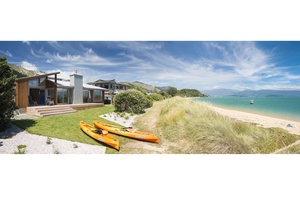
Tata Beach Family Bach by Redbox Architects
There is a generosity at play here: when on the beach the house signals to you, gesturing you to come and occupy, and a generous spatial relationship with the neighbours and the street has also been achieved. Extensive use of cedar, exposed macrocarpa trusses and plywood ceilings have helped in the crafting of this welcoming house. Informal spaces, including a new paved outdoor courtyard and external storage cupboard, exemplify the ideals of easy holiday living and demonstrates a clear understanding of beachside bach living. The brave and productive re-use of a utilitarian building has created a gathering space that lovingly expresses the idea of family holidays by the water.
HOUSING – MULTI-UNIT AWARD:
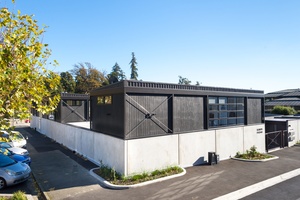
Sussex Mews by Box Design
An uncompromising concrete wall clearly demarcates the boundary of this development. Once inside, a mix of single- and double-level units have been cleverly arranged to maximise the available space, while the variation in plan invites neighbourly meetings and visits. The private courtyard spaces and pocket garden areas at the heart of each unit define the spaces and increase the sense of scale, bringing light and air into the interior while defining the living rituals of the homes. Overall, this is a well thought out and considered response to the challenge of creating good quality, liveable density on the city fringe.
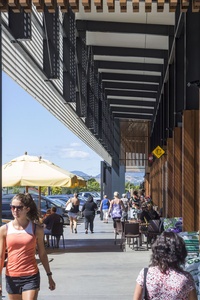
COMMERCIAL ARCHITECTURE AWARD:
Upper Queen Street by Irving Smith Architects
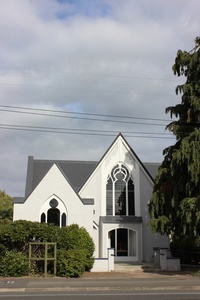
The notion of ‘big box’ retail being contained by highly functioning smaller tenancies is a noble one. Here, the treatment to the carpark area is generous, well structured, and scaled to encompass both the pedestrian activity and vehicle movement that enlivens this edge. A mix of mesh, steel and timber are layered to provide necessary shading and create a generous space for interaction between the ubiquitous car and the retail entries. Unfortunately, big box operations have still managed to encroach and dominate the length of Queen Street, but the flexibility designed along this façade has futureproofed it for adaptation into smaller tenancies. We hope potential occupants soon seize the opportunities that the architectural framework has provided.
HERITAGE AWARD:
St Andrew Church by Irving Smith Architects
A clever design response has been applied to this provincial church, which was once deemed earthquake-prone and uninhabitable. Not content with an initial solution of a visible steel cage, the architects explored a more innovative, ‘invisible’ intervention that required the removal of the roof and the placement of a nest of steel over the existing sarking and carbon-fibre, high-strength tendons on the walls. This solution is an excellent example of how good collaboration between architects and engineers can achieve quieter and more sympathetic results for heritage buildings in need of care.
ENDURING ARCHITECTURE AWARD:
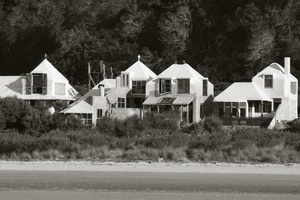
Awaroa Bach by Athfield Architects
This grouping of buildings designed by the late Sir Ian Athfield, which span back across 45 years, first emerged as a self-built settlement for five adventurous families. The buildings clearly reflect Ath’s early interest in testing a settlement pattern. They explore functional relationships and shape spaces around shared amenities – an architecture for communal living. As we currently face challenges of construction affordability, energy efficiency and aged-care, this project demonstrates an architectural approach that shouldn’t be ignored. When viewed in its entirety, Awaroa demands a special place among Ath’s long list of works. For those lucky enough to stumble across it, there can be no mistaking the author of this innovative and whimsical group of buildings.
All winners of the 2016 Nelson–Marlborough Architecture Awards are eligible for shortlisting in the New Zealand Architecture Awards, which will be decided later in the year, and announced in November.

